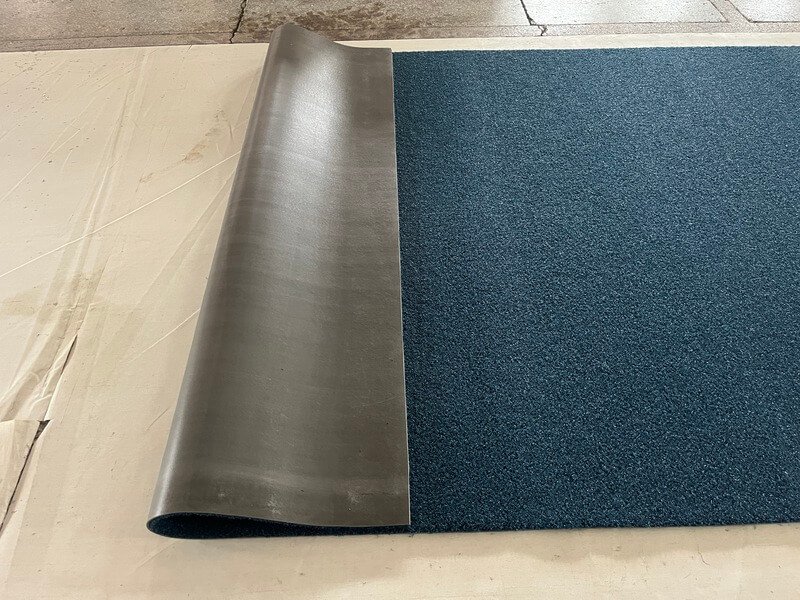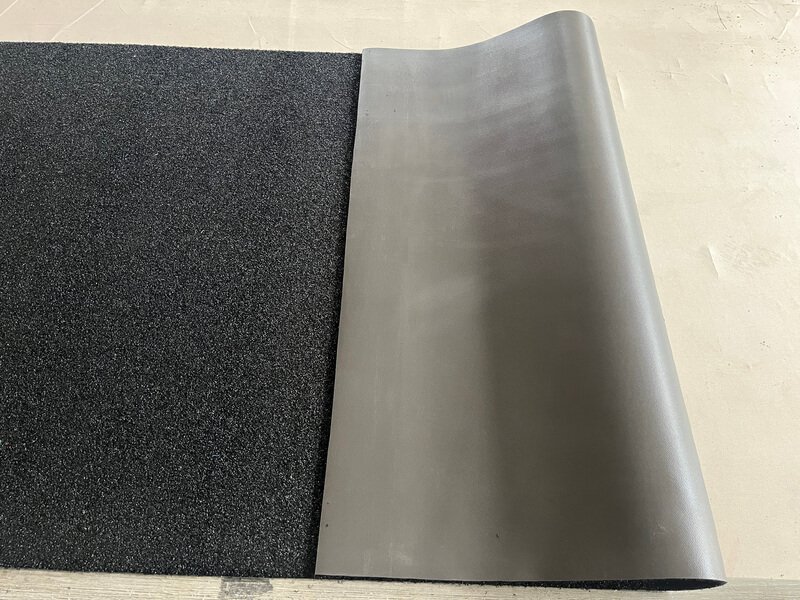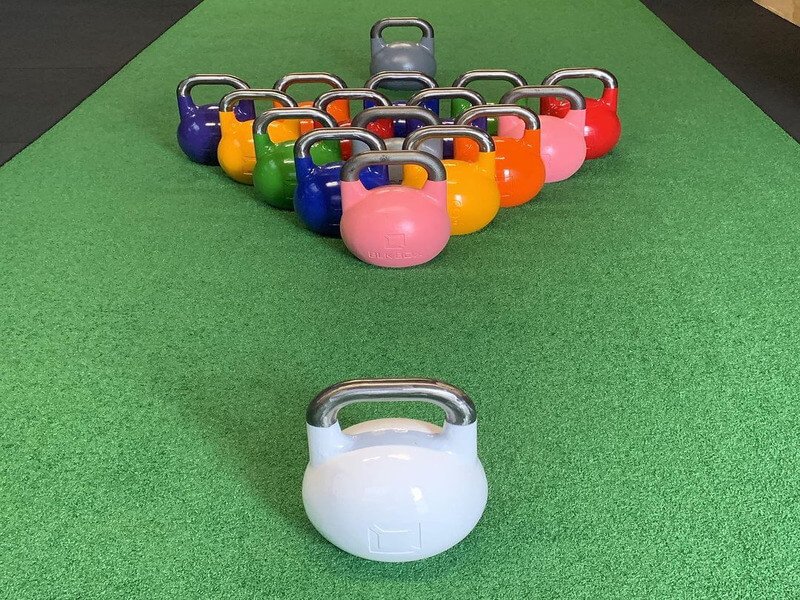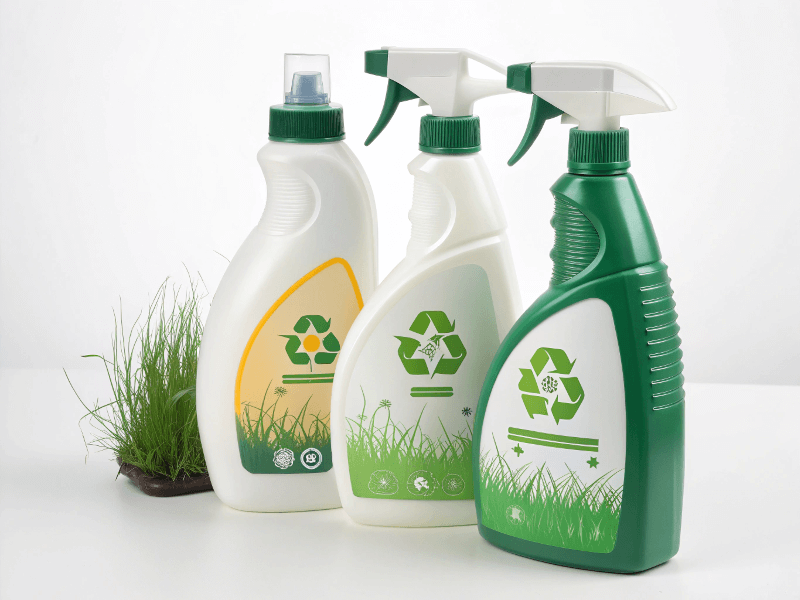يتطلب العشب الصناعي المبطن التنظيف المنتظم والصيانة المناسبة لضمان السلامة وطول العمر والأداء الأمثل. أقوم بصيانة هذه الأسطح من خلال إزالة الحطام أسبوعياً والتنظيف العميق شهرياً وعمليات الفحص الموسمية للحفاظ على طبقة التبطين والألياف العشبية.
تتجاوز صيانة العشب الصناعي المبطّن مجرد تنظيف السطح. بعد سنوات من العمل مع هذه الأسطح المتخصصة، تعلمت أن نظام حشوة البولي يوريثين المدمج يتطلب تقنيات عناية محددة تختلف عن العشب الصناعي التقليدي. توفر طبقة التبطين المصنوعة من البولي يوريثين مقاس 5 مم الملتصقة بالبطانة العشبية امتصاصاً فائقاً للصدمات وراحة فائقة، ولكن هذا البناء المتطور يتطلب عناية فائقة لمنع التلف والحفاظ على الأداء.
يكمن مفتاح الصيانة الناجحة في فهم كيفية عمل الهيكل المبطن. على عكس العشب الصناعي التقليدي الذي يعتمد على حبيبات المطاط أو حشوة الرمل للتوسيد، فإن العشب المبطن يحصل على أدائه من الدعامة الرغوية. وهذا يعني أن طرق التنظيف يجب أن تحمي كلاً من ألياف العشب الصناعي ونظام التبطين الأساسي. لقد وجدت أن العناية اللطيفة والمتسقة تمنع الإصلاحات المكلفة وتطيل عمر السطح بشكل كبير.

إن فهم الخصائص الفريدة لأنظمة العشب المبطن يساعدني في تقديم إرشادات أفضل لعملائي فيما يتعلق بالصيانة، مما يضمن حصولهم على أقصى قيمة من استثمارهم.
ما الذي يجعل العشب الصناعي المبطن مختلفاً عن العشب الصناعي العادي؟
يتميز العشب الصناعي المبطّن بطبقة توسيد من البولي يوريثين مقاس 5 مم ملتصقة مباشرةً بالطبقة الخلفية للعشب، مما يلغي الحاجة إلى حبيبات المطاط أو الحشو الرملي مع توفير امتصاص فائق للصدمات وراحة فائقة للتطبيقات الداخلية.
يكمن الفرق الأساسي بين العشب الصناعي المبطّن وغير المبطّن في خصائص البناء والأداء. فالعشب المبطن يدمج نظام التبطين مباشرة في المنتج، بينما تعتمد الإصدارات غير المبطنة على مواد حشو منفصلة أو إعداد قاعدة منفصلة للأداء.
اختلافات البناء
يتكون العشب الصناعي المبطّن من ثلاثة مكونات رئيسية: ألياف العشب الصناعي، ونظام دعم أساسي، وطبقة من رغوة البولي يوريثان المبطنة. يبلغ سُمك حشوة البولي يوريثان عادةً 5 مم وتوفر توسيداً متناسقاً عبر السطح بأكمله. هذا النهج المتكامل يخلق سطح لعب أكثر اتساقاً مقارنةً بأنظمة الحشو التقليدية.
من ناحية أخرى، يحقق العشب الصناعي غير المبطّن أداءه من خلال بنية القاعدة ويمكن استخدامه في الداخل والخارج على حد سواء. وفي حين أنه يفتقر إلى طبقة التبطين المدمجة، إلا أنه يوفر تنوعاً أكبر في بيئات التركيب وعادةً ما تكون تكلفته أقل في البداية.
خصائص الأداء
يتفوق النظام المبطّن في امتصاص الصدمات، مما يقلل من إجهاد المفاصل أثناء الجري والقفز والسقوط. لقد لاحظت أن المستخدمين يشعرون بإرهاق أقل وإصابات أقل على الأسطح المبطنة بشكل صحيح. كما توفر طبقة الرغوة أيضاً الحد من الضوضاء، مما يجعلها مثالية للمرافق الداخلية حيث يكون التحكم في الصوت أمراً مهماً.
ومع ذلك، فإن العشب المبطن مصمم في المقام الأول للاستخدام في الأماكن المغلقة بسبب حساسية الدعامة الرغوية للرطوبة وتقلبات درجات الحرارة. يتطلب نظام الحشو المدمج التحكم في المناخ للحفاظ على الأداء الأمثل ومنع التدهور.

ويعتمد الاختيار بين الأنظمة المبطنة وغير المبطنة على التطبيق الخاص بك، والميزانية، ومتطلبات الأداء.
كم مرة يجب عليك تنظيف العشب الصناعي المبطّن؟
إزالة الحطام أسبوعياً والتنظيف العميق شهرياً للحفاظ على العشب الصناعي المبطن بفعالية. قد تحتاج المناطق ذات الازدحام الشديد إلى عناية أكثر تواتراً، بينما يضمن التنظيف العميق الموسمي الأداء والنظافة على المدى الطويل.
وضع جدول زمني مناسب للتنظيف يمنع تحول المشاكل البسيطة إلى مشاكل كبيرة. لقد قمت بتطوير ترددات مختلفة للصيانة بناءً على أنماط الاستخدام والعوامل البيئية التي تؤثر على منشآت العشب المبطن.
الصيانة اليومية والأسبوعية
بالنسبة للمناطق ذات الازدحام الشديد مثل الصالات الرياضية ومرافق التدريب، فإن إزالة المخلفات يومياً تحافظ على نظافة السطح وأمانه. أوصي باستخدام منفاخ أوراق الشجر أو المكانس الكهربائية أو المكابس البلاستيكية لإزالة المخلفات السائبة مثل الغبار والشعر والجزيئات الصغيرة. هذا يمنع التراكم الذي يمكن أن يؤثر على مظهر العشب وأدائه.
تشمل الصيانة الأسبوعية تنظيف ألياف العشب بالفرشاة للحفاظ على وضعها المستقيم ومظهرها الطبيعي. استخدم فرشاة ذات شعيرات صلبة أو مجرفة العشب مع العمل بعكس اتجاه الحبوب لرفع الألياف المضغوطة. تساعد هذه العملية أيضاً على إعادة توزيع أي ترسبات قد تحدث في المناطق عالية الاستخدام.
التنظيف العميق الشهري
يتضمن التنظيف العميق الشهري غسيل السطح بشكل شامل باستخدام محاليل صابون معتدلة أو منظفات العشب الصناعي المتخصصة. أتجنب المواد الكيميائية القاسية التي يمكن أن تتلف حشوة البولي يوريثان أو ألياف العشب. الشطف اللطيف باستخدام خرطوم الحديقة يزيل الغبار المتراكم ويحافظ على المظهر الجديد للسطح.
أثناء الصيانة الشهرية، أقوم أيضاً بفحص نظام الحشو بحثاً عن أي علامات ضغط أو تلف. يسمح الاكتشاف المبكر للمشكلات بإجراء إصلاحات فورية قبل أن تؤثر على السطح بأكمله.
الاعتبارات الموسمية
يتطلب العشب المبطن الداخلي صيانة موسمية أقل تواتراً من الأسطح الخارجية، ولكن التنظيف العميق والفحص كل ثلاثة أشهر يضمن الأداء الأمثل. أركّز على المناطق المحيطة بالدرزات والحواف التي قد تتراكم فيها الرطوبة أو الحطام.

تمنع جداول الصيانة المتناسقة عمليات الإصلاح المكلفة و تمديد العمر الإنتاجي للسطح بشكل ملحوظ.
ما هي منتجات التنظيف الآمنة للعشب الصناعي المبطن؟
استخدم منظفات معتدلة ومحايدة الأس الهيدروجيني مصممة خصيصاً للعشب الصناعي أو محاليل الصابون اللطيفة. تجنب المواد الكيميائية القاسية أو المبيضات أو المنظفات الحمضية التي يمكن أن تتلف حشوة البولي يوريثين وألياف العشب الصناعي.
إن اختيار منتجات التنظيف المناسبة يحمي كلاً من ألياف العشب ونظام الحشو المدمج. لقد اختبرت العديد من محاليل التنظيف المختلفة ووجدت أن المنتجات اللطيفة والمتخصصة توفر أفضل النتائج دون التسبب في ضرر.
حلول التنظيف الموصى بها
يخلق صابون الأطباق الخفيف الممزوج بالماء محلول تنظيف فعال واقتصادي للصيانة الدورية. عادةً ما أستخدم نسبة ملعقة كبيرة من الصابون لكل جالون من الماء للتنظيف العام. يزيل هذا المحلول بفعالية معظم الأوساخ والبقع دون التأثير على مواد العشب.
توفر منظفات العشب الصناعي التجارية حلولاً مريحة ومعدة مسبقاً مصممة خصيصاً لأنظمة العشب الصناعي. وغالباً ما تشتمل هذه المنتجات على عوامل مضادة للميكروبات تساعد على منع الرائحة ونمو البكتيريا، وهو أمر مهم بشكل خاص في بيئات اللياقة البدنية الداخلية.
المنتجات التي يجب تجنبها
لا تستخدم أبداً المبيض أو الأمونيا أو غيرها من المواد الكيميائية القاسية على العشب الصناعي المبطن. هذه المواد يمكن أن تكسر حشوة البولي يوريثين وتسبب تلفاً دائماً لألياف العشب. وبالمثل، تجنب استخدام المنظفات الحمضية مثل الخل أو المنتجات القائمة على حامض الستريك التي يمكن أن تتسبب في تحلل مواد البطانة.
يمكن أن تتسبب أنظمة الغسيل عالية الضغط في تلف طبقة الحشو ويجب تجنبها. نظام الرغوة المدمج أكثر حساسية للضغط من العشب الرغوي التقليدي، مما يتطلب طرق تنظيف ألطف.
العلاجات المتخصصة
للتحكم في الروائح والتعقيم، توفر المنظفات القائمة على الإنزيمات المصممة للعشب الصناعي نتائج فعالة بدون مواد كيميائية ضارة. تعمل هذه المنتجات على تكسير المواد العضوية وتحييد الروائح بشكل طبيعي، مما يجعلها مثالية لمناطق الحيوانات الأليفة أو مرافق اللياقة البدنية عالية الاستخدام.

يضمن لك اختيار المنتج المناسب التنظيف الفعال مع حماية استثمارك في أنظمة العشب الصناعي المبطنة.
كيف يمكنك إزالة البقع العنيدة من العشب الصناعي المبطّن؟
عالج البقع على الفور عن طريق التنشيف من الخارج إلى المنتصف، ثم عالجها بمحاليل التنظيف المناسبة بناءً على نوع البقعة. تتطلب البقع المختلفة أساليب محددة لمنع تلف نظام البطانة.
يعتمد نجاح إزالة البقع على التحرك السريع واستخدام التقنية المناسبة لكل نوع من أنواع التلوث. لقد قمتُ بتطوير طرق محددة للبقع الشائعة التي تحافظ على سلامة كل من ألياف العشب ونظام الحشو.
المبادئ العامة لإزالة البقع
تصرف دائماً بسرعة عند ظهور البقع. فالبقع الطازجة أسهل بكثير في إزالتها من البقع المتراكمة. امسحي البقع السائلة المنسكبة على الفور باستخدام مناشف نظيفة مع العمل من خارج البقعة باتجاه المركز لمنع انتشارها.
لا تفرك أو تدعك بقوة، لأن ذلك قد يتلف ألياف العشب ويدفع البقعة إلى عمق الحشو. وبدلاً من ذلك، استخدمي حركات تربيت لطيفة واتركي محاليل التنظيف تعمل قبل محاولة إزالتها.
أنواع البقع المحددة
| نوع البقعة | طريقة العلاج | اعتبارات خاصة |
|---|---|---|
| انسكاب السوائل | يُمسح على الفور ويشطف بالماء النظيف | تصرف في غضون دقائق للحصول على أفضل النتائج |
| البقع الزيتية | استخدم صابون الأطباق المزيل للشحوم واشطفه جيدًا | قد يتطلب علاجات متعددة |
| المواد اللزجة | التجميد بالثلج، والكشط برفق، وتنظيف البقايا برفق | الإزالة الميكانيكية قبل المعالجة الكيميائية |
| المادة العضوية | المنظفات الإنزيمية والشطف الشامل | مهم للوقاية من الروائح الكريهة |
إزالة البقع المتقدمة
بالنسبة للبقع المستمرة، أستخدم أحياناً مزيلات بقع العشب الصناعي المتخصصة الآمنة للأنظمة المبطنة. غالباً ما تتطلب هذه المنتجات وقت تلامس أطول ولكنها توفر نتائج أفضل من المنظفات العامة.
في الحالات الشديدة، قد تكون خدمات التنظيف الاحترافية ضرورية. فلديهم إمكانية الوصول إلى المعدات المتخصصة ومحاليل التنظيف التي يمكنها إزالة البقع العنيدة دون الإضرار بنظام الحشو.

تقنيات إزالة البقع المناسبة تحافظ على مظهر ونظافة أسطح العشب الصناعي المبطنة.
متى يجب عليك الاتصال بمتخصص لصيانة العشب المبطن؟
اتصل بالمتخصصين في حالة وجود تلطيخ واسع النطاق، أو إصلاحات التماسات، أو مشاكل ضغط الحشو أو التنظيف العميق السنوي. تمتلك الخدمات الاحترافية معدات وخبرات متخصصة لمعالجة احتياجات الصيانة المعقدة بأمان.
في حين أنه يمكن إجراء الصيانة الدورية داخل الشركة، إلا أن بعض الحالات تتطلب خبرة مهنية ومعدات متخصصة. أوصي بالخدمات الاحترافية عندما تتجاوز المشاكل قدرات الصيانة العادية أو عندما تكون هناك حاجة إلى علاجات متخصصة.
الحالات التي تتطلب مساعدة مهنية
غالباً ما يتطلب التلوث الواسع النطاق أو البقع العميقة معدات ومحاليل تنظيف احترافية. تحدث هذه الحالات عادةً بعد الفيضانات أو الانسكابات الكبيرة أو مشاكل الصيانة المهملة التي تفاقمت بمرور الوقت.
تحتاج إصلاحات الدرزات ومشاكل نظام البطانة إلى عناية احترافية لمنع حدوث المزيد من الضرر. يمكن أن تؤدي محاولة إصلاح نظام البطانة المدمج بنفسك إلى إبطال الضمانات والتسبب في مشاكل إضافية.
مزايا الخدمات المهنية
تتمتع فرق الصيانة المحترفة بإمكانية الوصول إلى معدات التنظيف المتخصصة التي يمكنها التنظيف العميق دون الإضرار بنظام الحشو. كما أنهم يحملون أيضاً تأميناً على المسؤولية وتغطية ضمان لعملهم، مما يوفر راحة البال لأصحاب المنشآت.
يمكن أن تؤدي الصيانة الاحترافية المنتظمة إلى إطالة عمر السطح بشكل كبير. أوصي عادةً بالتنظيف العميق الاحترافي السنوي حتى بالنسبة للأسطح التي تتم صيانتها بشكل جيد لضمان الأداء والمظهر الأمثل.
اعتبارات التكلفة
على الرغم من أن الخدمات الاحترافية تنطوي على تكاليف مقدمة أعلى، إلا أنها غالباً ما تكون اقتصادية على المدى الطويل من خلال منع الاستبدال المبكر والحفاظ على تغطية الضمان. كما تقدم العديد من الخدمات الاحترافية عقود صيانة توفر رعاية ثابتة بتكاليف يمكن التنبؤ بها.

توفر خدمات الصيانة الاحترافية الخبرة والمعدات التي تضمن الأداء الأمثل وطول العمر الافتراضي لأنظمة العشب الصناعي المبطنة.
الخاتمة
الصيانة المناسبة للعشب الصناعي المبطّن يضمن السلامة والأداء وطول العمر من خلال التنظيف المنتظم والمنتجات المناسبة والعناية الاحترافية عند الحاجة.
هل أنت مستعد لتجربة فوائد العشب الصناعي المبطن بشكل صحيح؟ اتصل بي اليوم للحصول على استشارة وعينة مجانية. سوف أساعدك في اختيار النظام المناسب لاحتياجاتك وتقديم إرشادات الصيانة المستمرة لضمان الأداء الأمثل لسنوات قادمة.

![0510bf7c2c5d587371b7ad2c444bbf71[1]](https://meettfit.com/wp-content/uploads/2025/06/0510bf7c2c5d587371b7ad2c444bbf711.jpg)